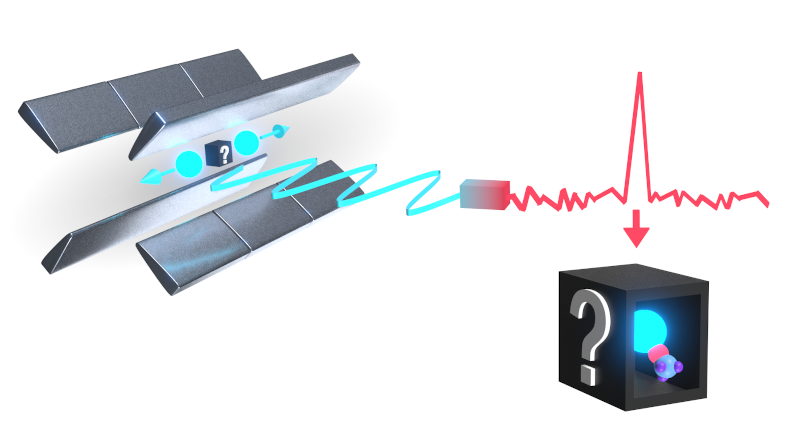Our work on the controlled synthesis and detection of radioactive molecules was published today in Physical Review Letters. In the paper we demonstrate a new all-optical technique for identifying trapped ions by their mass in an ion trap. The technique, optical mass spectrometry, has several advantages: it is non-destructive and fast. We applied the technique to detect the synthesis of radioactive molecules that are exceptional sensors for addressing open questions related to time symmetry violation.
The paper was the culmination of an incredible process that started with grad student Mingyu Fan one day noticing that the trapped ions he was working with were excited to large motional states if he changed one of our laser’s frequencies by a small amount (~10 MHz). We discussed and I encouraged Mingyu to explore what he had stumbled upon by chance. In short order Mingyu had figured out how to convert a signal from the amplified motion into a mass of the trapped ions. Mingyu then worked out the mechanism behind the motional amplification (see the paper for an explanation). We then decided to apply this new ion identification technique to radioactive molecules, which we were confident we could make, but didn’t have a great means to confirm production until this point. Mingyu and Craig produced RaOH+ and RaOCH3+ by reacting trapped radium ions with trace quantities of methanol that was controllably leaked into the vacuum chamber. These molecules are great for addressing a pair of old and pressing problems: first, how is it that there is a massive imbalance between matter, which is abundant, and antimatter, which is practically nonexistent, in the Universe - the Baryon asymmetry problem, and second, why does quantum chromodynamics seemingly preserve charge conjugation and parity symmetry, known as the Strong CP problem.
The figure, by Max our resident artist, is a depiction of optical mass spectrometry where a pair of bright laser-cooled radium ions surround an unknown dark ion. Photons (teal) are detected and converted into a signal (red) that tells us the mass of the unknown ion.
In addition to using optical mass spectrometry with radium and radioactive molecules, a team led by undergraduate Xiaoyang Shi applied the technique to identify the four stable strontium isotopes in the significantly different environment of a high frequency ion trap. It was great to have so many people in the lab and to utilized both of our ion traps for this work. I was also happy that Xiaoyang was able to get data with the trap he built before he graduated - he has since started physics grad school at MIT.
The motivation to produce RaOCH3+ stemmed from a conversation in the fall of 2019 with Nick Hutzler. Later, Nick and graduate student Phelan Yu started working on a paper about this molecule for its potential sensitivity to new physics. It was special to submit our paper jointly with Nick and Phelan’s work to PRL, and go through the review process in parallel with them. Our papers were both featured as Editor’s Suggestions, and Ronald Garcia Ruiz wrote up a very nice APS Physics Viewpoint article about the letters.
The work was also featured in the UC Santa Barbara Current in an article by Harrison Tasoff - Enlightening Dark Ions.
In the lab we’re hard at work on the exciting next steps!
